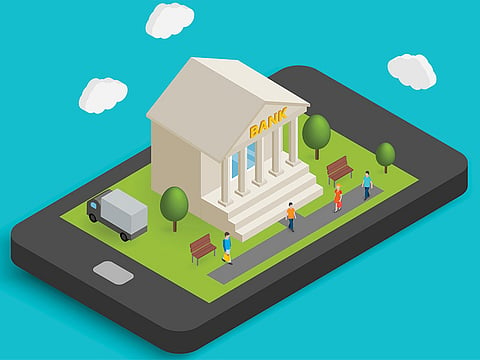UAE's affluent middle class embrace banking apps
The majority of affluent customers in the UAE prefer to bank digitally, according to new research

Affluent middle class customers in the UAE are more likely to interact with their bank using digital channels than ever before, according to new research by Collinson Group.
The research found that 83 per cent of affluent middle class customers in the UAE use banking and finance apps – up from 36 per cent in 2014. It also revealed that 42 per cent of customers prefer to do their banking online or via mobile app, while 32 per cent prefer telephone banking and 26 per cent prefer to go into a branch.
About 66 per cent of UAE customers reported they make digital payments whenever possible. Another 64 per cent said they would consider a branchless digital bank if they were to switch banks in the future.
Collinson Group polled 6,125 of the top 10-15 per cent of earners from Australia, Brazil, China, France, Hong Kong, India, Singapore, the United Kingdom, the United States of America and the UAE.
As the affluent middle class increasingly choose digital channels to engage with financial service organisations, brand managers must act now to ensure loyalty programmes meet customers’ demands for a seamless digital experience.
This becomes even more important as the spending power of Millennials and Generation Z is set to soar in the next five years. Millennials are pushing companies to innovate faster and are defining new customer expectations. Born in the age of instant communication, smart technology, and a hyper-connected world, these young consumers are influencing digital transformation.
“Digital will be the biggest battleground in financial services as digitally native millennials and Generation Z become more lucrative target audiences for the sector. We can expect to see digital engagement continue to soar over the next three to five years. Brands need to act now in order to improve their digital offering, or risk missing the opportunity to build loyal relationships with lucrative audience segments,” said Christopher Evans, Director at Collinson Group.
The opportunity
“The way people shop and the way they interact with loyalty programmes has changed. Millennials and Generation Z for example, typically engaging across five screens simultaneously. Their relationship with brands is also completely different to other audience groups– they want instant gratification and claim not to want to save up loyalty points over a longer period to access a reward.”
“But the traditional financial services firms actually have a clear opportunity to deliver highly engaging, digitally driven loyalty initiatives due to the wealth of data they collect. They need to go further in terms of using this data to improve targeting and segmentation to appeal to distinct audience groups. Banks really need to develop their own loyalty identities,” said Evans.
The UAE is perfectly placed to capitalise on the digital loyalty uprising, with additional insight from Collinson Group finding a strong appetite for loyalty programmes.
The research found that UAE banking loyalty programmes encourage 87 per cent of members to spend more and that membership for bank loyalty programmes has risen from 25 per cent in 2014 to 39 per cent in 2016.
“Digital loyalty initiatives can be far more cost effective than more traditional methods. By levering data and delivering highly personalised loyalty rewards at the appropriate time, brands can form emotional connections with customers and create additional sales opportunities across their organisation. Embracing digital tools will allow brands to communicate and engage their customers in more meaningful ways, and digital applications can be used to drive bank wide loyalty. Doing this will help create active digital footprints and take the next step beyond loyalty to fully fledged brand advocacy,” Evans said.
Sign up for the Daily Briefing
Get the latest news and updates straight to your inbox



